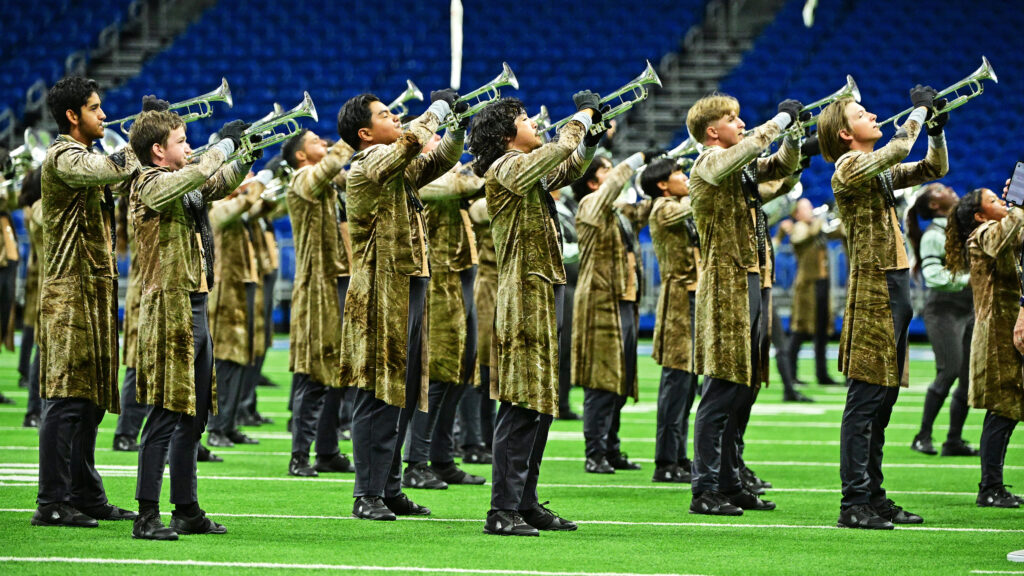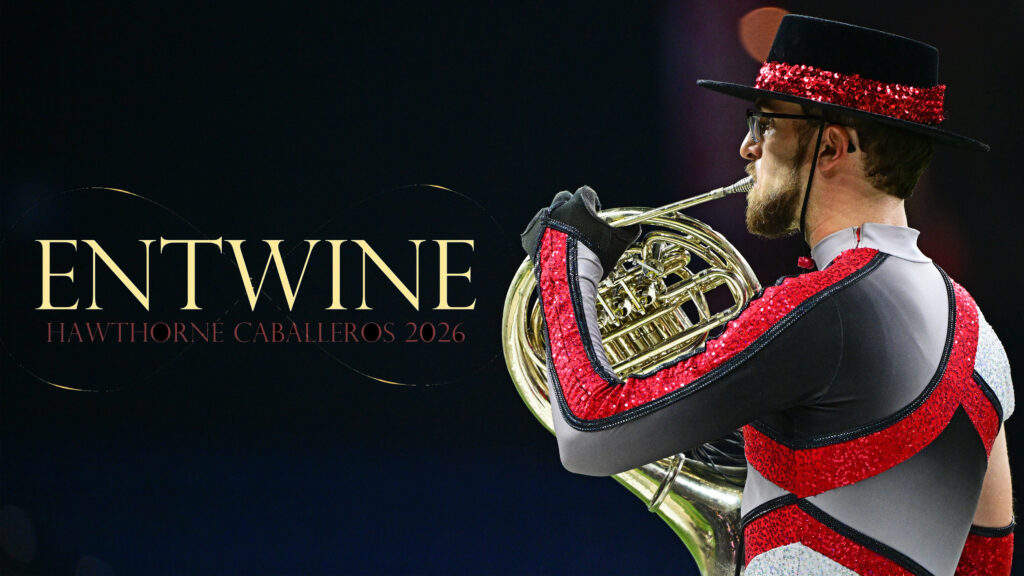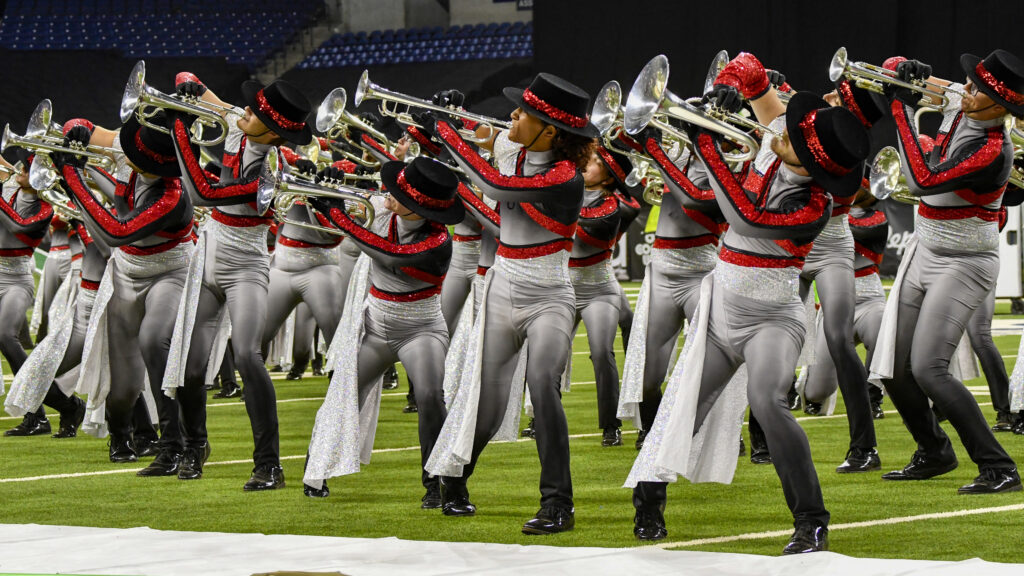From a Colts’ press release:
The Colts’ 2003 program is entitled “Symphonic Visions: Ritual, Song, and Dance,” which features a sampling of Western cultural and musical practice in the Common Era, viewed through the prism of current trends in compositional technique and the color and pageantry of modern drum corps. The three principal sections of the program are based upon musical, cultural and artistic source materials taken from three new and exciting works for wind band.
The program’s opening section, “Ritual,” is based upon David Gillingham’s “Cantus Laetus,” which invokes the 8th-century hymn/tune, “Veni Creator Spiritus.” Variously ascribed to such luminous figures as Charlemagne and St. Gregory the Great, the ancient tune is associated with the most basic and solemn communal rites of medieval Europe. So thoroughly widespread was its acceptance in meaning and usage, it remains the only Roman Breviary hymn retained for use by the Protestant Episcopal Church.
“Song,” the second section in the program, is taken from lyrical and mournful passages in “Harrison’s Dream,” for which composer Peter Graham received the 2002 Ostwald Award for “best new work for band” from the American Bandmasters Association. The piece is inspired by John Harrison’s lifelong endeavor to perfect a tool for accurate transoceanic navigation in the 1700s. Graham’s plaintive melodies are reminiscent of 18th-century popular interest in European folksong, and evoke laments for the many sailors and ships lost at sea prior to Harrison’s success.
“Blue Sapphire,” the third movement of Roger’s Cichy’s “Colours,” provides source materials for the third section of our program, “Dance.” Impressionist Cichy mixes pigments of texture and harmony, rhythm and melody to create colors of style and mood, not as a preparatory step but as the end product. The result is cool and jazzy, reminiscent of the work of Bernstein, Copland and Gershwin, in a style that has inspired recent generations of choreographers and listeners alike.
Contemporary practice represents the accumulation of disparate aspects of cultural heritage. In that vein, a fourth and final production combines element of the first three, bringing our presentation of Symphonic Visions: Ritual, Song, and Dance, into focus as the sum of its parts.





